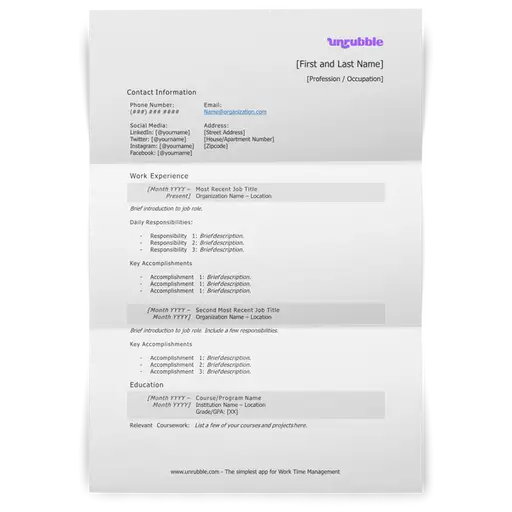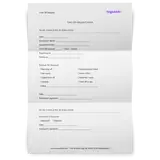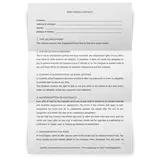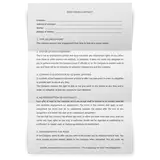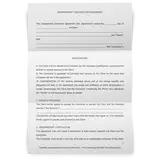So you’ve taken the first step towards your dream job by downloading a resume template. But what’s the best way to make sure you’re really putting your best foot forward?
To help, here is a look at what a resume is, why you should use a resume template, and ten tips for writing and submitting the perfect resume.
Here’s a sample Resume template that can be easily customized and adapted to meet your requirements. It’s free to download and use.
What is a resume?
A resume is a business document that is typically only one or two pages in length. The purpose of this document is to highlight or ‘sell’ an individual’s work experience, education, qualifications, and skillsets.
Resumes are most commonly used by job seekers when they are either looking for a new job or a promotion at their existing job. However, resumes can also be used in situations where an organization is seeking funding and must share information about the professional competencies of its leadership.
Why should I use a resume template?
They can save you a ton of time.
Without a professional resume template, you essentially have to become a graphic designer overnight. Templates can help to save you this valuable time so that you can get started with what really matters: selling yourself to your potential employers!
Hiring managers are familiar with the format.
Resume templates work because hiring managers are familiar with them. The basic resume format is designed to display your information in a way that can be read quickly and with ease. Remember, hiring managers oftentimes sift through hundreds of resumes in a day – and if your resume is messy or difficult to read, it’s more likely to end up in the trash.
They can help you narrow down what’s really important about your skillset.
A simple resume template can help to keep you on track and focused on what’s really important about your work experience and skillset. Even though you might be tempted to share every detail about every project you’ve worked on, a resume template can force you to narrow down your accomplishments and only present the ones that will help you get the job that you’re applying for.
Ten tips for writing and submitting the perfect resume.
Adapt it to suit the role you’re applying for.
Think of a modern resume template as just a starting point. Then, once you have all of your basic information put together on a page, you can consider adapting your resume to suit the role or industry that you are applying for.
For example, if you are in the marketing or advertising industry, you might be able to be more creative with color or font combinations. However, if you are applying for a role in accounting or engineering, you will want to make sure that your resume has a more traditional feel.
Keep it brief.
Your resume does not have to be your entire life’s story. In fact, hiring managers do not have the time to read your life story anyways!
That being said, always make sure that your resume is brief, concise, and to the point. If you have just finished high school or university, a one-page resume is the recommended length when applying for jobs. However, if you have been in the workforce for more than five years, you can extend your resume to two pages. It is not common to have a three-page resume, so make sure that all of your information can fit neatly in one or two concise pages.
White space is your friend.
Even though it’s tempting to fill up your entire resume with text, it’s also important to leave some white space on your paper. Too much text can feel overwhelming, and plenty of white space on your resume helps to keep it visually appealing for your readers. You can utilize white space by making sure that different sections are adequately spaced apart, and leaving good-sized margins around the edge of your resume.
Only include relevant work experience.
When adapting your word resume template to fit your individual situation, make sure that you only include relevant work experience.
For example, unless you are applying for a job related to swimming, it is not appropriate to include that summer job you had as a lifeguard in high school. Try to stick with work experience that shows you have either experience or the required skills for the job you are applying to.
Highlight your accomplishments – but never lie!
The purpose of a resume is to present your professional self in the best possible light. However, that doesn’t mean that you should lie or stretch the truth on your resume. Remember, if you are brought in for an interview, the hiring manager may ask you specific questions about your work experience that you mention on your resume. That’s why it’s best to just be honest and highlight your genuine accomplishments and skills.
Use readable fonts.
It should go without saying, but one of the most basic objectives of writing your resume is to make sure that it is readable. And that means sticking with one font that is basic and readable. Avoid using fonts that are in cursive, curly, or too playful for a professional setting. If you’re looking for ideas on what types of fonts to use, try to stick with something like Arial, Calibri, or Times New Roman.
Use numbers and action verbs when possible.
Hiring managers love to see real, specific accomplishments on resumes. Take some time to reflect on your past work experiences, and jot down several key ways that you made a difference in your role. If you’re not really sure how to explain this in terms of numbers or action-verbs, you might find the following examples to be helpful:
- Increased personal sales revenue by X% over a 3-year period.
- Implemented X# of policies to a team of X# members.
- Improved conversion rates by X%.
Remember, the more specific you are, the better!
Never include your photo.
Depending on your industry or location, it is not recommended to include a photo directly on your resume. For some positions, they will discard your resume entirely if you choose to include a photo in order to remain compliant with certain HR policies. It’s okay to include a link to your LinkedIn page or other social media accounts, however, your main resume should be free from any photos or other information that could indicate your age or gender.
Ask someone you trust to proofread it for you.
Writing and submitting your resume to potential employers can feel like an extremely vulnerable experience. Once you feel happy with your resume, make sure to ask someone that you trust to proofread it for you. They might be able to spot errors that you’ve missed, and they can also help to point out sections in your resume that might be difficult to understand.
Keep it updated – even when you don’t have to.
Even though you might be happy with your job, life can still happen, and you never know when you may need your updated resume quickly! The best way to stay on top of this is to update your resume on a regular basis. For most people, updating their resume once or twice a year is enough to keep it fresh and relevant.
Keeping your resume up to date is also a great way to reflect on your own career goals, appreciate what you’ve accomplished, and remain open to new opportunities.
